· STRUCTURAL MYCELIUM ·
In this investigation for the Complex Forming seminar, we started our design process researching fungi at the microscopic level through mycelium and the macroscopic level through the study of mushroom growth.
This process concluded in a pavilion in the Retiro Garden in Madrid.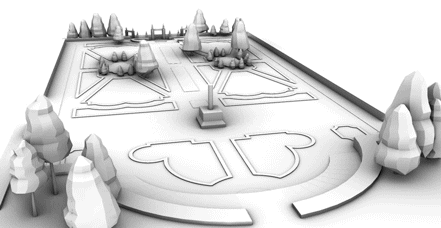
i. NATURAL SYSTEM
Mycelium is the base for all fungal species. Its role is to look for food to ensure survival and, while doing it, save as much energy as possible. The different hyphae that form the mycelium cover the field in search of nourishment and when found they reorganise themselves to follow the shortest path and avoid energy waste. Once the meal is finished, these hyphae are discarded and the energy reconducted elsewhere. A common growth strategy in mushrooms is differential growth. It happens when areas with a similar initial geometry undergo different growth patterns. This process generates twists and curls in the geometry, that tries to accommodate the excess of material from different areas.
A common growth strategy in mushrooms is differential growth. It happens when areas with a similar initial geometry undergo different growth patterns. This process generates twists and curls in the geometry, that tries to accommodate the excess of material from different areas.
We wanted to test the capacity of differential growth to generate shapes humans can interact with and extrapolated the mycelium’s optimal way of eating, changing isolated feeding points for isolated stressed areas in a structure. This way the symbiosis between the two systems in nature is modified but somehow kept and translated to the architecture world.
We realised that the topology of the initial geometry and its surroundings played a crucial role in the final output. The mycelium growth algorithm, for example, when applied to curved surfaces tends to approximate geodesic patterns as it avoids areas of high curvature to avoid wasting energy. Differential growth could be “directed” by increasing deforming the initial shape or by locating obstacles in its way.

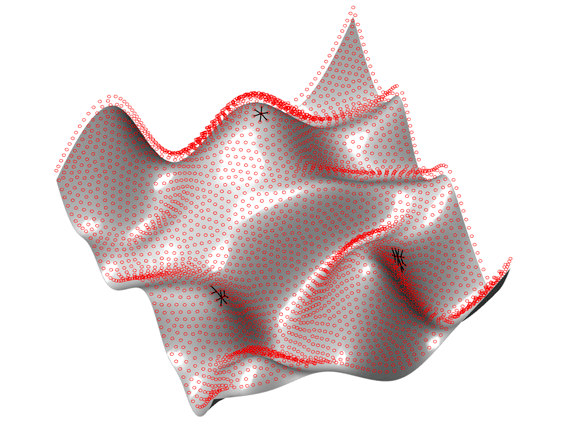
ii. SITE
Retiro Gardens is the most iconic park in Madrid. Built in the 17th century, it has a rational organisation that follows a series of axes connecting different squares and landscape features.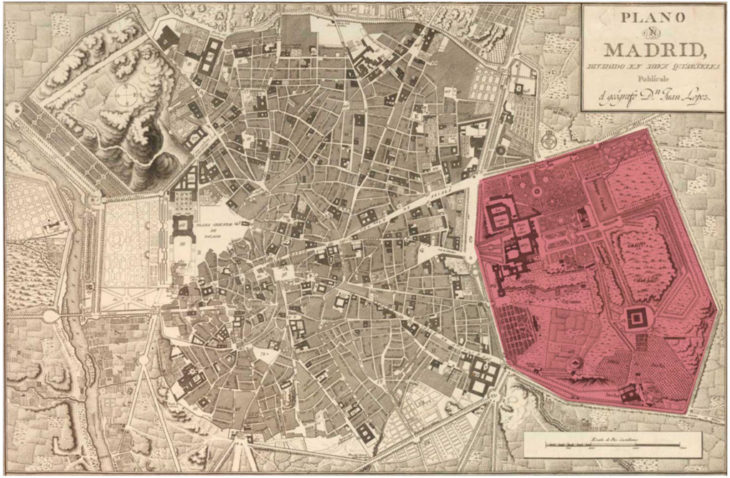 In contrast with this linear and static pattern, we introduce a pavilion that bents and twists as a counterpoint to its rigid site.
In contrast with this linear and static pattern, we introduce a pavilion that bents and twists as a counterpoint to its rigid site.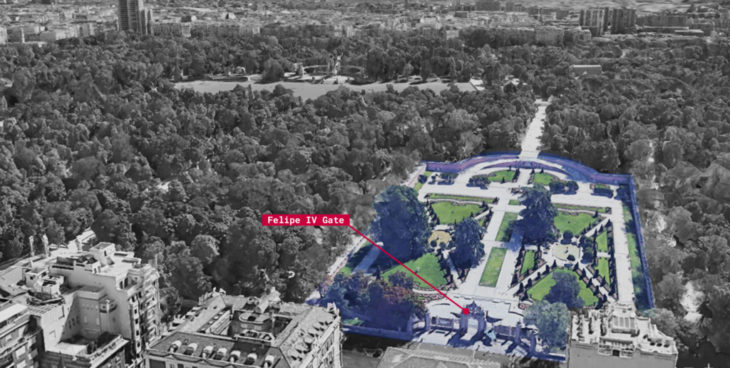 We have define where to place our assembly after the analysis of architectural elements, pedestrian flows and areas with higher solar radiation.
We have define where to place our assembly after the analysis of architectural elements, pedestrian flows and areas with higher solar radiation.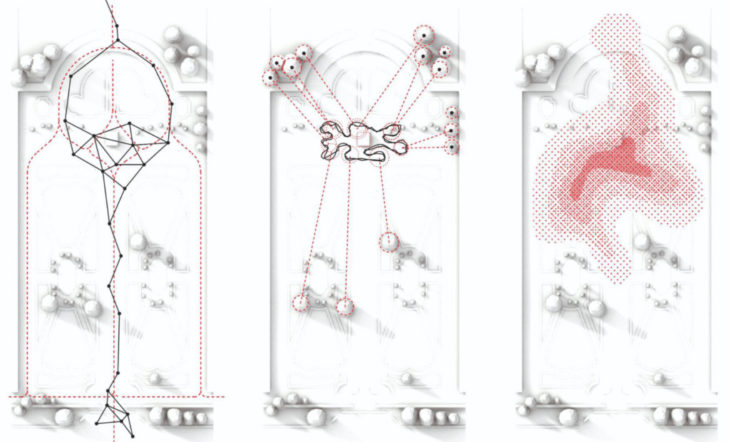
iii. FORM FINDING PROCESS
The pavilion script has four phases:  In the first one, we generate the base mesh deforming, extruding and opening up a curve according to its surroundings. We kept a consistent topology that would allow homogeneous growth.
In the first one, we generate the base mesh deforming, extruding and opening up a curve according to its surroundings. We kept a consistent topology that would allow homogeneous growth. In the second phase, differential growth is applied to the mesh and it is structurally optimised using as genome the growth parameters to reduce the average and maximum structural utilization.
In the second phase, differential growth is applied to the mesh and it is structurally optimised using as genome the growth parameters to reduce the average and maximum structural utilization.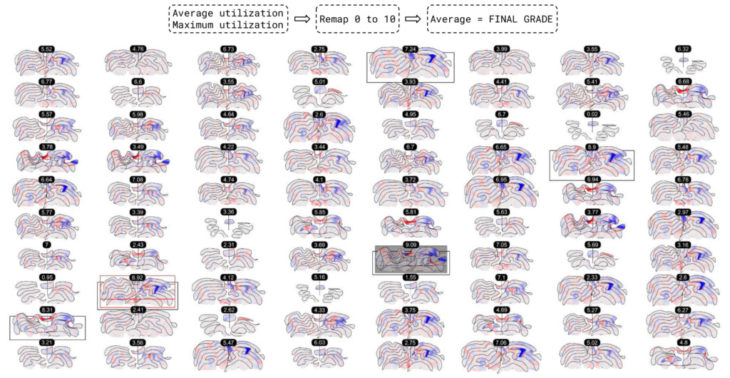
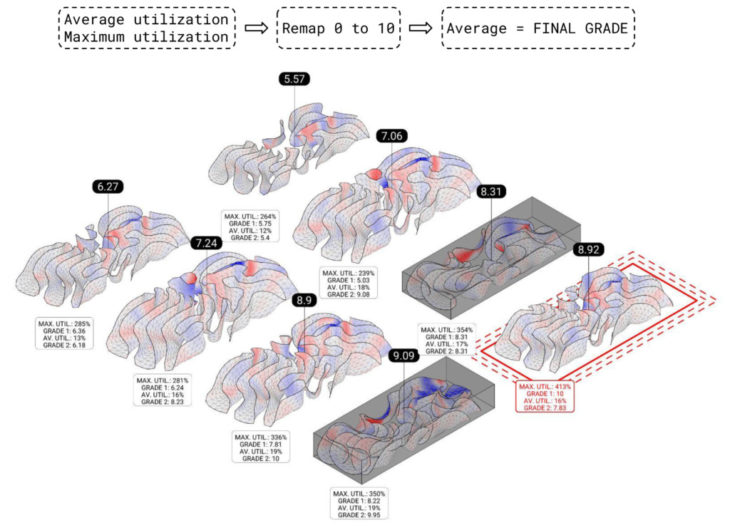 iv. OPTIMIZATION PROCESS
iv. OPTIMIZATION PROCESS In the third phase, the growth of the structural mycelium takes place. A myriad of branches rises up to reach the points of higher stresses and brings them to the supports. The mesh is folded on the mycelium crevices and reanalyse. Structural utilization is reduced by 50%.
In the third phase, the growth of the structural mycelium takes place. A myriad of branches rises up to reach the points of higher stresses and brings them to the supports. The mesh is folded on the mycelium crevices and reanalyse. Structural utilization is reduced by 50%.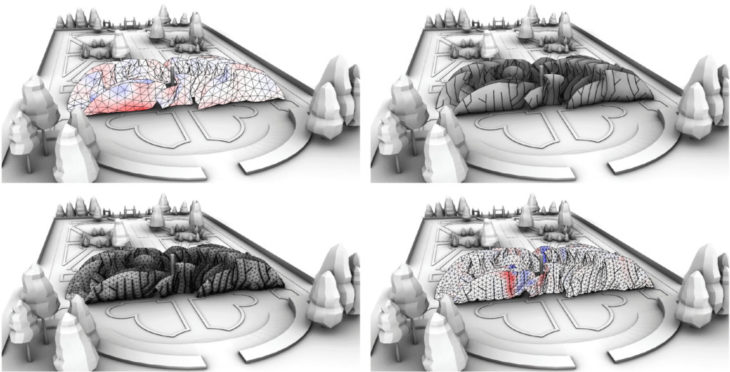
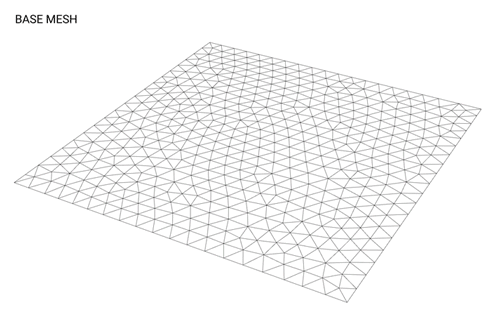 The fourth part defines, evaluates and optimises architectural elements. Areas of higher stresses become opaque wooden shells while the rest are materialised as a truss structure.
The fourth part defines, evaluates and optimises architectural elements. Areas of higher stresses become opaque wooden shells while the rest are materialised as a truss structure.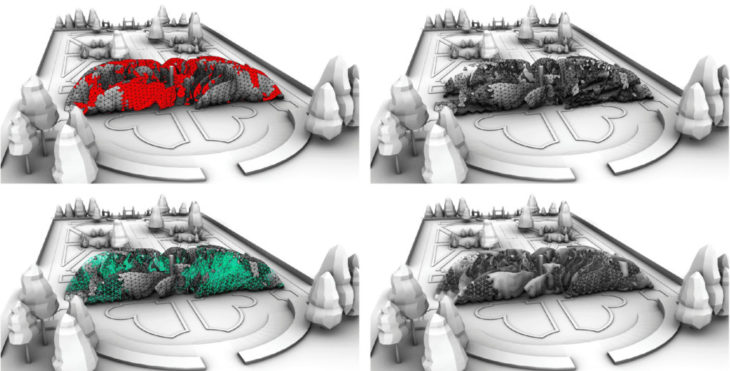 Truss lengths are standardised and the nodes are designed for 3D printing, reducing element complexity while keeping the design’s variable curvature.
Truss lengths are standardised and the nodes are designed for 3D printing, reducing element complexity while keeping the design’s variable curvature.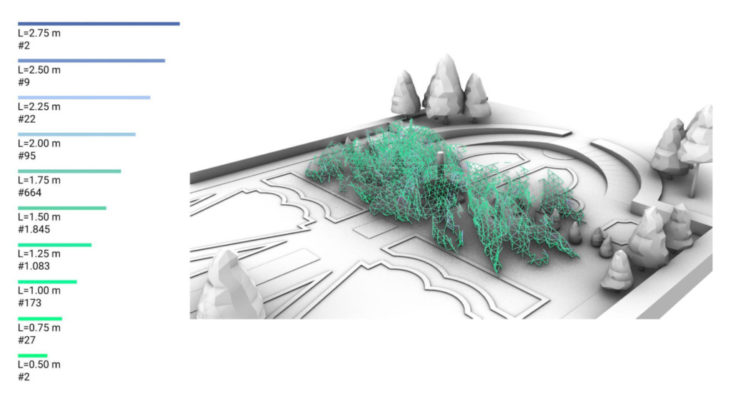
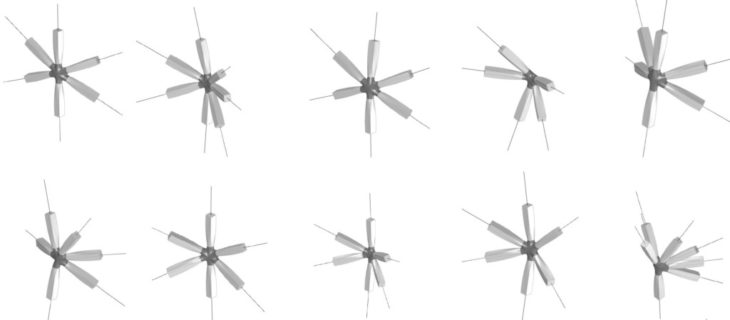 The openings in panels are shaded by five façade modules that respond to solar radiation. Thus, the form-finding process we have followed generates a unique in situ pattern for our pavilion.
The openings in panels are shaded by five façade modules that respond to solar radiation. Thus, the form-finding process we have followed generates a unique in situ pattern for our pavilion.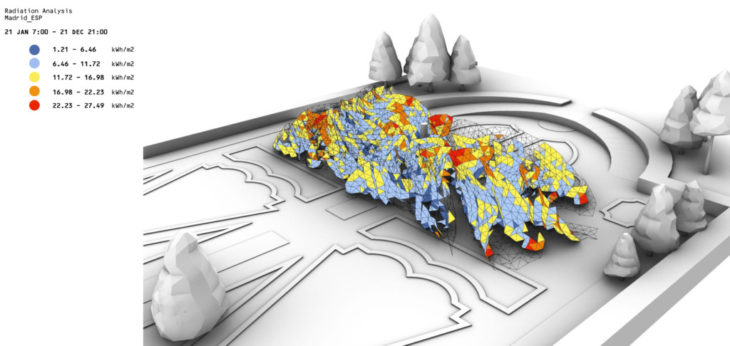
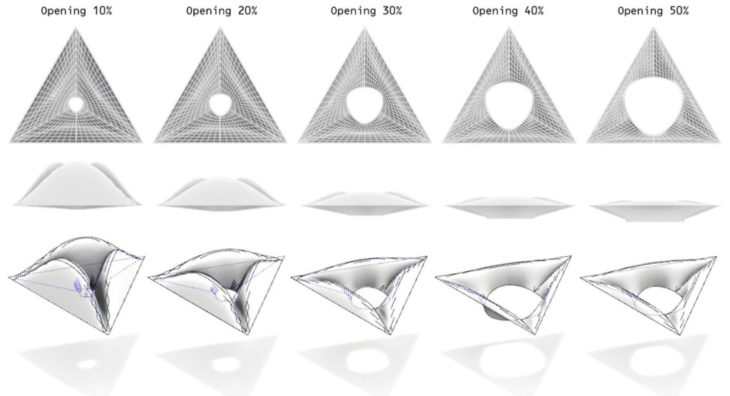
v. THE PAVILION
In the end, the pavilion is not a formal approximation to a series of biological processes but comes from understanding and reinterpreting the rules of those processes, giving them one of many possible applications in architecture. 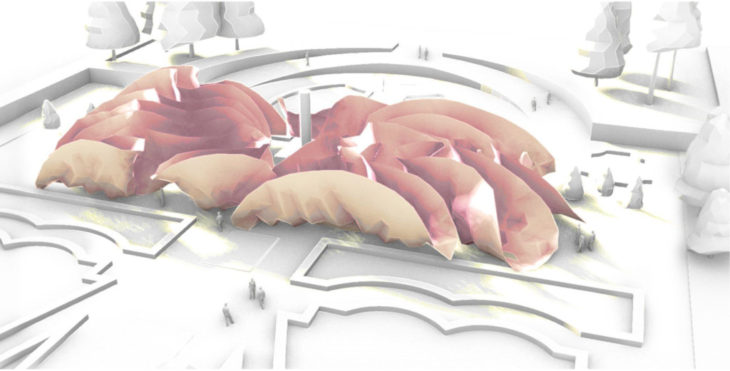
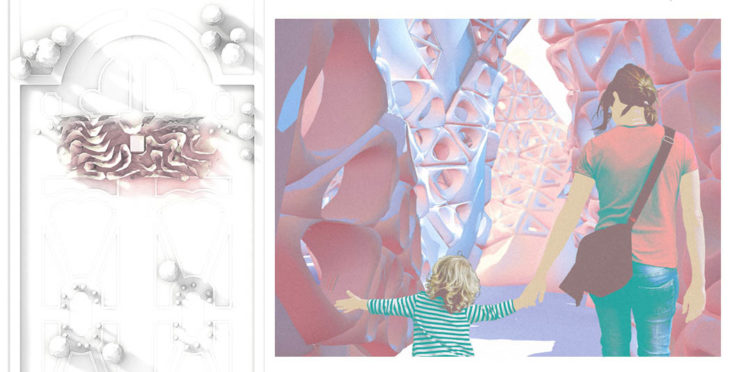 CREDITS
CREDITS
Structural Mycelium is a project of IAAC, Institute for Advanced Architecture of Catalonia, developed at Master in Advanced Computation for Architecture & Design (MaCAD) in 2021/22 by:
Students: Pablo Antuña and Lucía Leva
Faculty: Rodrigo Aguirre and Hesham Shawqy